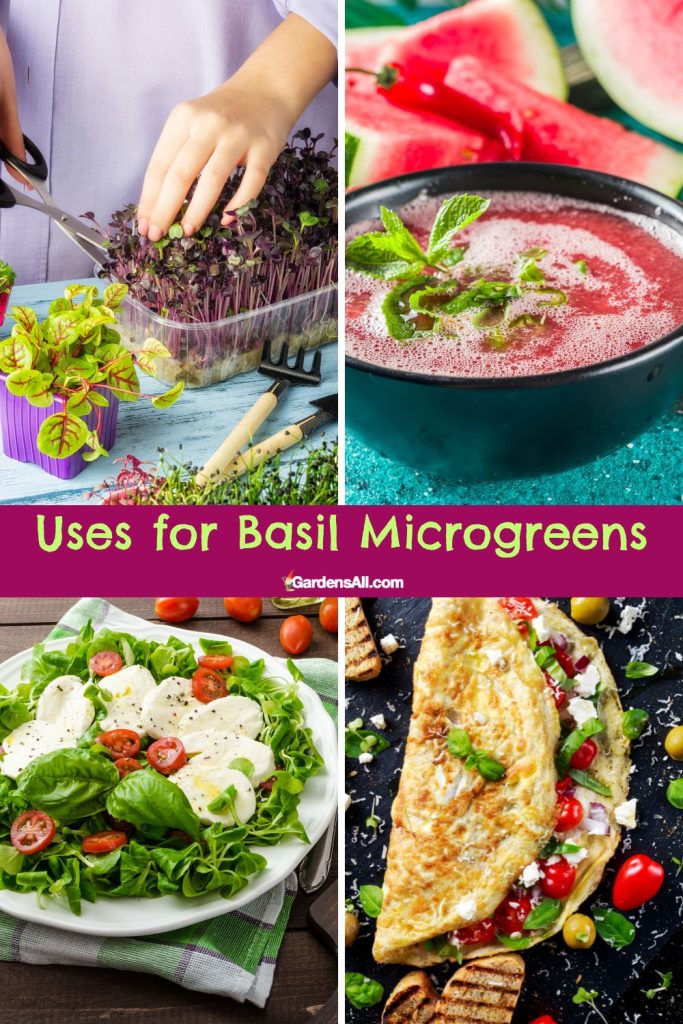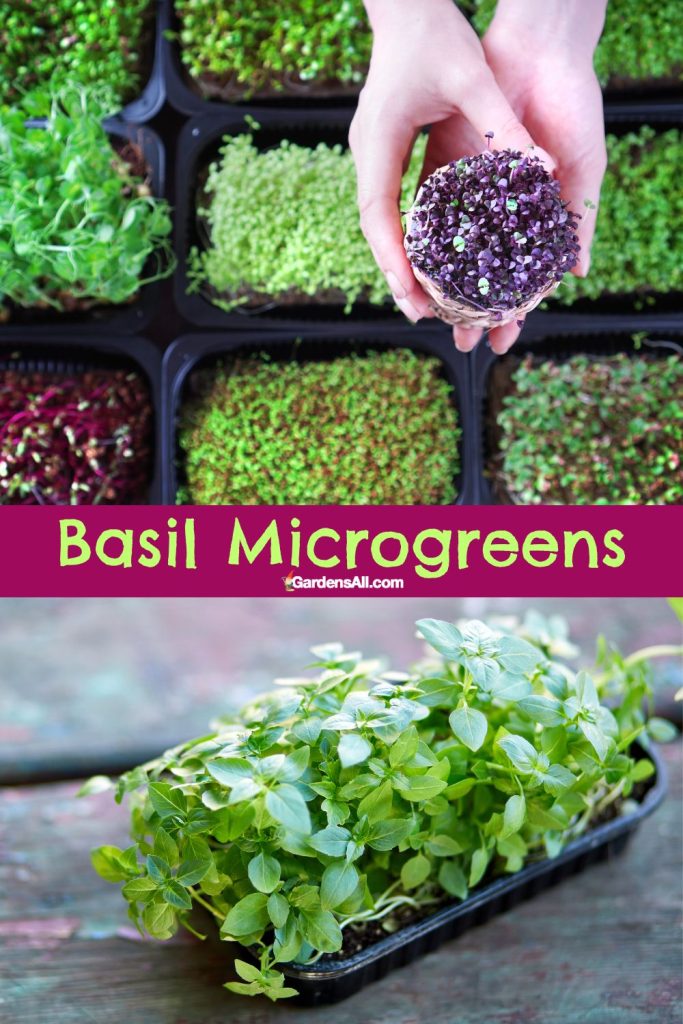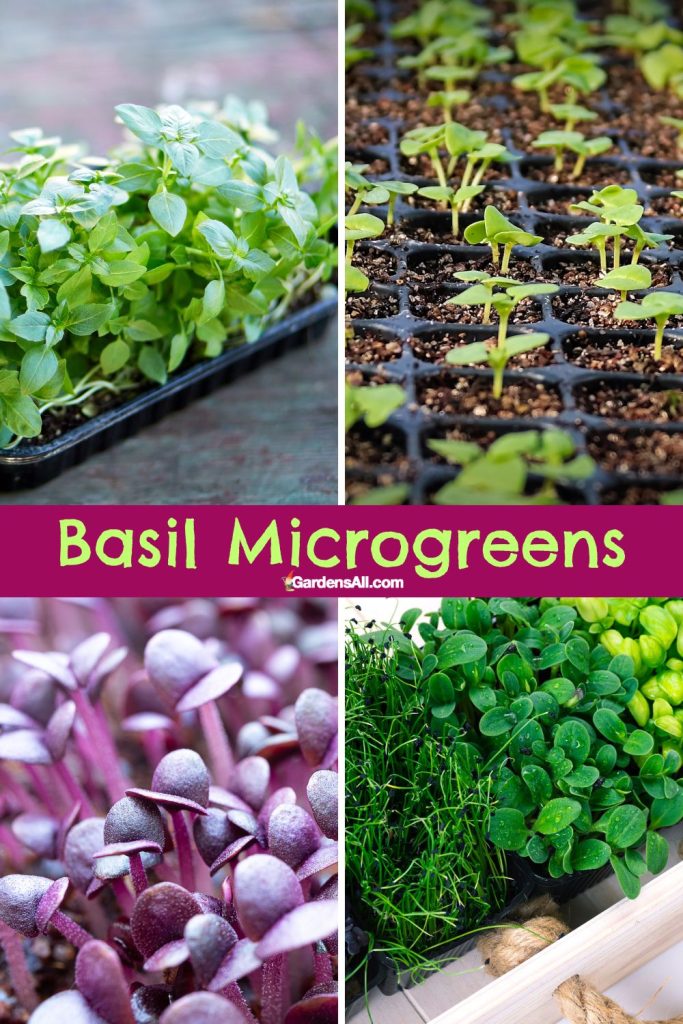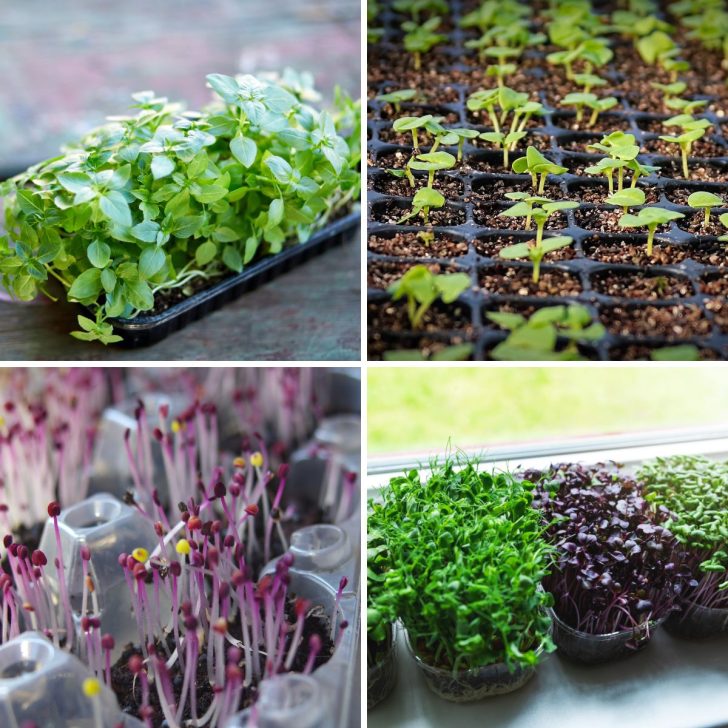As the name suggests, basil microgreens, are tiny, vibrant basil plants. Emerging as a superfood, these microgreens bring fantastic benefits to our plates.
What are Microgreens?
Microgreens are young vegetable greens. Basil, Ocimum basilicus, microgreens are basil plants harvested just after the first true leaves have developed. Basil microgreens are high in nutrition, rich in taste, and vibrant in color.
Microgreens are like snippets of nature’s multivitamins.
Nutritional Value of Basil Microgreens
Primarily, these microgreens are nutrient-dense. They pack a higher nutritional punch than their fully-grown counterparts. Notably, these microgreens are high in vitamins A, C, and K. Additionally, they provide good amounts of iron, calcium, and potassium.
Check out this article for more on basil seed benefits and nutrients.
How do They Taste?
In terms of flavor, basil microgreens offer a fresh, bold taste. They present a mild basil flavor, blending sweetness with a subtle peppery touch. As a result, they add a dynamic and delightful taste to any dish.
You can add these microgreens to salads and sandwiches in much the way you would basil leaves or sprouts. They’re also great topped on pasta dishes as a garnish that adds the flavor of basil, but without needing to chop the leaves into smaller pieces.
You may also enjoy our article on the difference between microgreens vs sprouts
Uses of Basil Microgreens
Importantly, basil microgreens are incredibly versatile.
Excellent Garnish and Toppings for:
- Omeletes / egg bake
- pasta dishes
- pizza
- sandwiches
- soups
Added to:
Once you get hooked on basil microgreens you may decide to branch into growing the basil plant indoors and out, if you aren’t already.

Growing Basil Microgreens at Home
Growing basil microgreens at home is remarkably simple.
- Start with:
- a shallow container
- quality basil seeds
- good potting soil, or microgreens medium
- Sprinkle the seeds evenly over growing medium on microgreens tray. Cover lightly with soil if using soil.
- Mist thoroughly with water. (Or fill tray according to instructions, if using a microgreens mat.
- Place seeded microgreens trays in a sunny spot or under a grow light.
- Water regularly to maintain consistent moisture, but do not over-water or they may mold.
- Harvest all or portions within 10-14 days by cutting at base with scissors.
We like to allow our microgreens to continue growing while we harvest as we use them. When the tray is less than half full, we go ahead and harvest remainder so that the tray can be refilled to allow another batch of basil or other microgreens to start growing.
For more details, see our article on how to grow microgreens, where we also compare growing mediums such as hemp and jute.

Health Benefits of Basil Microgreens
These delightful microgreens offer numerous aesthetic and health benefits wherever you use them. First, the basil microgreens high vitamin K content promotes healthy bones and blood clotting. Secondly, they provide antioxidants that combat harmful free radicals. Lastly, their rich nutrient content boosts overall health and wellbeing.
You may also be interested in this article on fermented tomatoes with basil and garlic.

In Summary
Basil microgreens are an incredible superfood that offer significant nutritional value, exciting flavor and numerous health benefits. Additionally, they’re versatile and easy to grow at home. Clearly, these tiny powerhouses bring big benefits to the table!
You may also be interested in our article on basil seed benefits, as well as how to harvest basil seeds.
I’m LeAura Alderson, a garden, herb and plant enthusiast with a passion for discovering the many edible and medicinal benefits of the plants all around us, including the weeds! I’m a writer, editor and media publisher for our family of websites.
While I was certified in fitness and life coaching, I am NOT a health practitioner. However, I’m a lifelong health enthusiast, with a keen interest in healthy, organic foods and making home remedies and the content we share is from our own experience and usage as well as that extracted from scientific research so that you can explore further on your own.
Always seek the advice and guidance of your health practitioners first and foremost.
As a family we’re steadily expanding our gardening, experimentation and knowledge around all things gardening, edible landscaping, fresh organic foods and self sustainability with farming in our future. I also own and manage iCreateDaily.com, a site all about transformation through creation, and the power of positivity, optimism and mindset.

